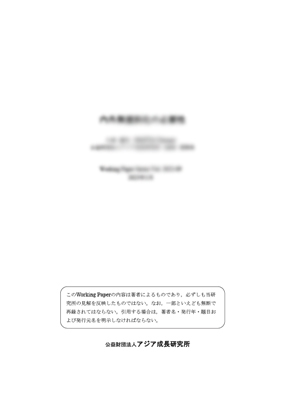Post Catch-up with Market Cultivation and Product Servicizing: Case of Taiwan’s Transportation Equipment Industries

| Author | Shin-Horng Chen, Pei-Chang Wen |
|---|---|
| Date of Publication | 2016. 8 |
| No. | 2016-16 |
| Download | 568KB |
Contents Introduction
This paper sets out to examine a key issue: how a latecomer, like Taiwan may develop its industry in a post catch-up manner. We make intensive inquiries into this issue via case studies on two sectors in Taiwan, namely the bicycle industry and the electric vehicle industry. One challenge to post catch-up is related to the situation where innovation model and path are at the fluid phase and where scarce opportunity for imitation is present. This has led us to giving special account to fuzzy front-end at the industrial level and how market cultivation and innovative business models come to play an important role in shaping the innovation path for post catch-up. For a couple of leading players in Taiwan’s bicycle industry, a key issue they faced was how to transform themselves and local setting in Taiwan to become a leader in high-end bicycles, in an attempt to fend off escalated international competition. In the emerging EV industry, the Taiwanese players try to overcome its structural weaknesses in the mainstream automotive industry to explore the possibility of levelling the playing field with the forerunners in the advanced countries. Our case studies suggest that technological catch-up is not necessarily a prelude to post catch-up, depending on the nature of new innovation trajectory and entry modes of the emerging industry. While the way in which a latecomer’s industry to rise in a post-catch-up manner has something to do with path dependence, something can be done to overcome the path dependence. Our analyses also lend support to the importance of product servicizing as a means of post catch-up, especially from the perspective of market cultivation. On balance, for post catch-up at an industrial level, a latecomer’s innovation system and its boundaries have to be shaped in line with the country’s level of technological accumulation, constituent firm’s strategy, the complexity of the innovation at issue, and the way in which the focal industry is emerging.
